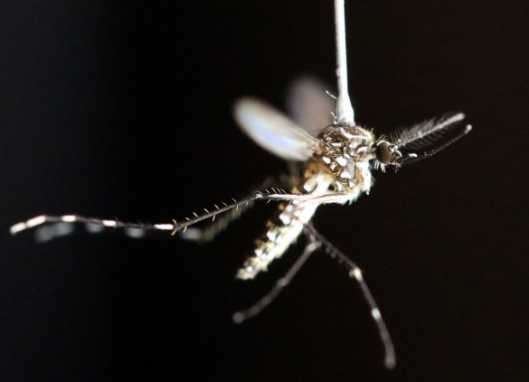The mosquito is possibly summer’s biggest nuisance. Sprays, pesticides, citronella candles, bug zappers — nothing seems to totally deter the blood-sucking insect. And neither can rain apparently.
Even though a single raindrop can weigh 50 times more than a mosquito, the insect is still able to fly through a downpour.
Georgia Tech researchers used high-speed videography to determine how this is possible. They found the mosquito’s strong exoskeleton and low mass render it impervious to falling raindrops.
The research team, led by Assistant Professor of Mechanical Engineering and Biology David Hu and his doctoral student Andrew Dickerson, found that mosquitoes receive low impact forces from raindrops because the mass of mosquitoes causes raindrops to lose little momentum upon impact. The results of the research will appear in the June 4 issue of the Proceedings of the National Academy of Sciences of the United States of America.
“The most surprising part of this project was seeing the robustness this small flyer has in the rain,” Dickerson said. “If you were to scale up the impact to human size, we would not survive. It would be like standing in the road and getting hit by a car.”
What the researchers learned about mosquito flight could be used to enhance the design and features of micro-airborne vehicles, which are increasingly being used by law enforcement and the military in surveillance and search-and-rescue operations.
|
|
To study how mosquitoes fly in the rain, the research team constructed a flight arena consisting of a small acrylic cage covered with mesh to contain the mosquitoes but permit entry of water drops. They used a water jet to simulate rain stream velocity and observed six mosquitoes flying into the stream. All the mosquitoes survived the collision.
“The collision force must equal the resistance applied by the insect,” Hu said. “Mosquitoes don’t resist at all, but simply go with the flow.”
The team also filmed free-flying mosquitoes that were subjected to rain drops. They found that upon impact the mosquito is adhered to the front of the drop for up to 20 body lengths.
“To survive, the mosquito must eventually separate from the front of the drop,” Hu said. “The mosquito accomplishes this by using its long legs and wings, whose drag forces act to rotate the mosquito off the point of contact. This is necessary, otherwise the mosquito will be thrown into the ground at the speed of a falling raindrop.”




